SKRR Breaking New Ground
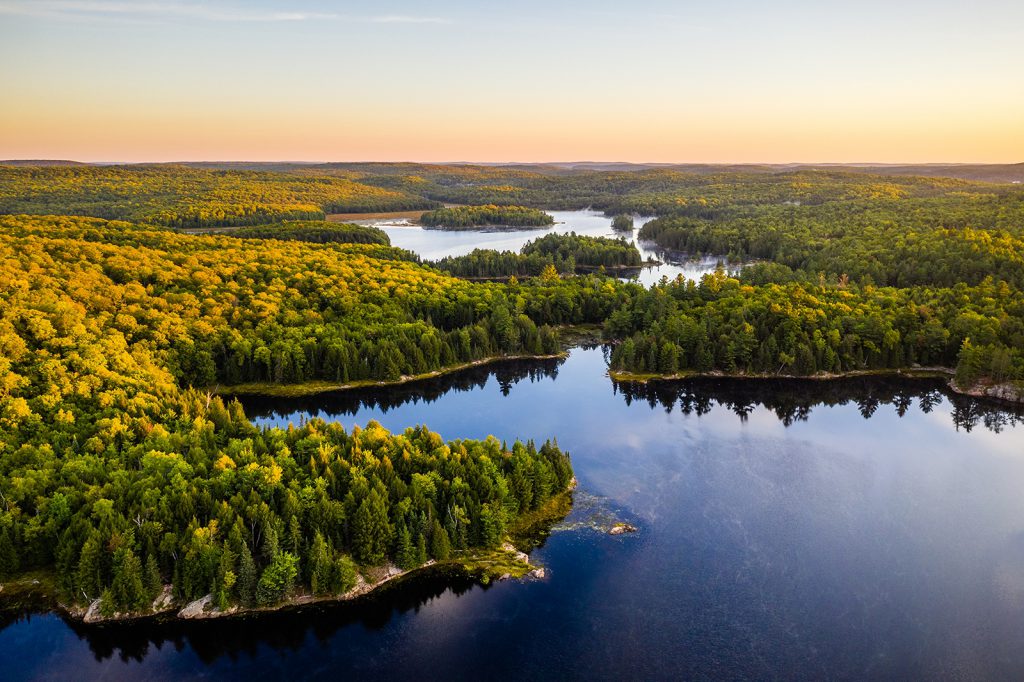
SKRR Exploration unlocks the potential mineral wealth of Saskatchewan
By Robert Simpson
Saskatchewan and Gold mining has traditionally not been synonymous, despite gold mining history going back to the early 1900’s and over forty small gold mining operations in the province. Now with gold price momentum reaching US$2000 an ounce and the high-grade Seebee and the Santoy underground mines both on track, veteran explorers like SKRR Exploration [TSX.V: SKRR] have turned an eye back to Saskatchewan’s Trans Hudson Corridor gold belt.
One might initially scoff at serious gold exploration in Saskatchewan; historically, gold mines there have been small and costly, but when you read the list of management, directors, and advisors of SKRR Exploration, one sits up in their chair and take notice of what they are doing.
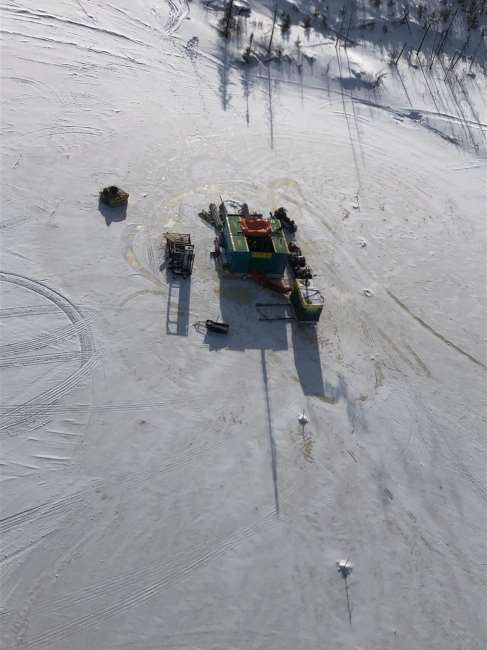 The roster reads like the wall of the Mining Hall of Fame. Ross McElroy, who has been working in Saskatchewan for the past 30 years and instrumental in discovering several of Saskatchewan’s major uranium mines, is the helm of the Board. He has teamed up with Sherman Dahl, SKRR Exploration’s president and CEO who over his 20 years at the National Bank raised over a $1 billion dollars of retail and institutional client financings. Other notables, Ron Netolitzky, credited with three major gold discoveries in Canada that were subsequently put into production: Eskay Creek, Snip and Brewery Creek. Craig Roberts, Michael Halvorson, Michael Murphy, and Brian Skanderbeg, round out a list of advisors, while Ian Butler and Jeremy Ross bring additional bench strength to the Board of Directors.
The roster reads like the wall of the Mining Hall of Fame. Ross McElroy, who has been working in Saskatchewan for the past 30 years and instrumental in discovering several of Saskatchewan’s major uranium mines, is the helm of the Board. He has teamed up with Sherman Dahl, SKRR Exploration’s president and CEO who over his 20 years at the National Bank raised over a $1 billion dollars of retail and institutional client financings. Other notables, Ron Netolitzky, credited with three major gold discoveries in Canada that were subsequently put into production: Eskay Creek, Snip and Brewery Creek. Craig Roberts, Michael Halvorson, Michael Murphy, and Brian Skanderbeg, round out a list of advisors, while Ian Butler and Jeremy Ross bring additional bench strength to the Board of Directors.
Saskatchewan, an underexplored, mine friendly jurisdiction
“I’ve always had a great appreciation for the potential mineral wealth of Saskatchewan. The province has been consistently rated as the top two or three jurisdictions for mining investment and is geologically endowed with the Trans Hudson Corridor which extends from the Snow Lake deposits in the north to the gold rich Homestake deposits South, along a geological corridor like the greenstone belts in the gold mining regions of Ontario and Quebec,†says Ross McElroy, Chairman of the Board for SKRR Exploration. (The Fraser Institutes’ 2021 Annual Mine Survey placed Saskatchewan third for investment attractiveness after Nevada and Arizona.)
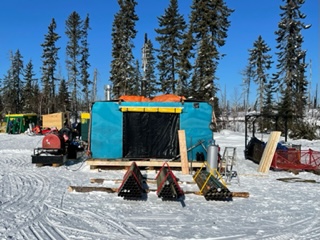 Looking at the bigger picture, McElroy says Saskatchewan is an attractive jurisdiction, both for investment and an under-explored from a geological perspective. Especially along the Trans Hudson Corridor, essentially an old mountain range formed two billion years ago, in a vast swath of mineralization that stretches up the spine of North America, from the U.S. Midwest, north through Saskatchewan, Manitoba, Hudson’s Bay, northern Ontario, Quebec and Labrador.
Looking at the bigger picture, McElroy says Saskatchewan is an attractive jurisdiction, both for investment and an under-explored from a geological perspective. Especially along the Trans Hudson Corridor, essentially an old mountain range formed two billion years ago, in a vast swath of mineralization that stretches up the spine of North America, from the U.S. Midwest, north through Saskatchewan, Manitoba, Hudson’s Bay, northern Ontario, Quebec and Labrador.
“The Trans-Hudson is the same geologic formation that encompasses the mining district around Flin Flon, Manitoba and gives it world-class deposits of uranium, zinc and copper and secondary gold resources. Part of the same system that South Dakota’s Homestake Mine was “45-million-ounce gold producer. We believe Saskatchewan’s Trans-Hudson has been overlooked as a gold resource,” says McElroy.
Historically Saskatchewan has produced over 40 smaller gold deposits, but SSR Mining’s multimillion-ounce gold Seabee Mine proved that large, high-grade gold deposits exist in Saskatchewan.
“Three years ago, when gold prices were lower, we were early entrants into Saskatchewan, and we cherry-picked the best properties,” says McElroy.
The Company’s extensive project portfolio consists of Irving/Leland Project, Ithingo Lake Property, Manson Bay Property, Cathro Gold Property, and Olson Gold Property. And two base metals properties, the Father Lake Project, and the Watts Lake Zinc Claims.
“SKRR is on a mission to build a world-class base metal and precious metal company based on the outstanding mineralization in Saskatchewan. SKRR will be a leader with a diversified portfolio of high-quality long-life assets. The SKRR team has done an incredible job over the last few years of drilling, exploring, discovering, and positioning the company for success,” says McElroy.
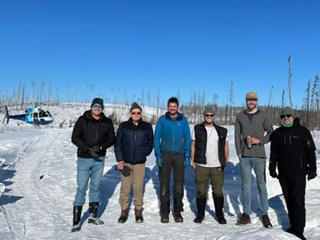 Olson property yields high-grade gold mineralization.
Olson property yields high-grade gold mineralization.
The most advanced project is Olson, where three successful drill campaigns have been completed over two years indicating high-grade, near-surface gold mineralization over a large area (six targets have been identified by drilling and mapping on surface) prospective for orogenic and VMS mineralization.
The Company found several showings on the Olson target area, which was the focus of the most recent drill 10-hole program, which the company is waiting for the assay results. The drill program was to follow-up drill results were in the Olson zone which suggested significant mineralization over large widths including: 11.04m @ 0.61 g/t Au (48.63m – 59.67m) and: 29.44m @ 1.30 g/t Au (105.04m – 134.48m), including: 10.21m @ 2.95 g/t Au (120.11m – 130.32m), including: 5.54m @ 4.12 g/t Au (121.69m – 127.23m), including: 0.78m @ 14.55 g/t Au (126.45m – 127.23m).
“Our Olson drilling was ambitiously designed to test the size potential of the Olson gold system. It was successful on all fronts. The consistent high-grade gold mineralization identified at the Olson project confirms the overall potential of growing into a significant resource. The Olson Project continues to yield exceptionally consistent gold results as we drill to define mineralization in the area,” says Sherman Dahi, Chief Executive Officer of SKRR Exploration.
“All the results to date show encouragement and demonstrate well-developed thickness with higher grade intervals with the zones still open in all directions. We are excited to see what the 2021 drill results yield,” says McElroy.
Another target of interest on the Olson Property is the Point, where drilling demonstrated near-surface potential with significant widths of mineralization, with larger higher-grade intervals including 50.24 metres at 0.41 g/t including 6.25 metres at 1.15 g/t Au.
“The Point target outcrops at surface, so we have good grade throughout, but what I like about this target is the width of the intersections, which suggests there is good potential for additional resources,†says McElroy.
The Olson project area overlies regionally sheared, highly strained metavolcanic and intrusive rocks, prospective for orogenic gold mineralization. The Property is host to 29 mineral occurrences defined by historical geological mapping, prospecting, trenching and 4,700 metres of historic diamond drilling, with the last drilling reported in 2008. Historical drilling at Olson Lake has intersected 7.5 m grading 2.07 g/t Au including 13.00 g/t Au over 0.65 m, and grab samples of up to 105.52 g/t Au have been collected at the Kalix occurrence. The Olson property is a joint venture between SKRR Exploration (SKRR -TSX) and Eagle Plains (EPL-TSX).
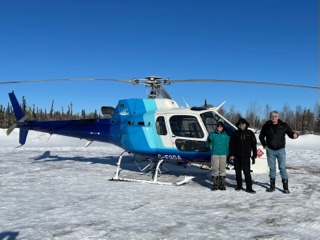 Manson Bay exploration expands the historical gold zone
Manson Bay exploration expands the historical gold zone
In January 2021, SKRR acquired a 100% interest in the Manson Bay Property, consisting of four mineral claims comprising a total of 64.537 hectares. The Manson Bay Property located in the Trans Hudson Corridor in east-central Saskatchewan is approximately 40-kilometres northwest of the historic mining center of Flin Flon, on the Manitoba border.
The Property had 43 historic drill holes and previously saw exploration activity in1985 by HudBay Minerals (three holes) and followed up in 1987-88 by Mingold Resources with a 44-hole, 4,607 metre program. Â Mingold estimated a historical resource of 660,000 tons grading 0.1 oz / ton (3.4 g/t) Au* to a depth of 122 metres down-dip (66,000 ounces gold) with good potential for expansion of depth and strike extent.
SKRR recently completed a 12 hole, 1,688-metre drill program where ten holes targeted within the outlined historic Manson Bay Gold Zone over approximately 450-metre of strike, to confirm and expand upon historicial drill results and two additional holes tested along strike to the south-west ~300-metres and 700-metres respectively of the southern extent of the Manson Bay Gold Zone. Ten holes intersected sulphide mineralization in multiple stacked sheared and brecciated zones, occasionally graphitic, returning significantly anomalous assays in widths ranging in width from 4.57m to 20.29 meters wide (down-hole width).
A follow-up drill program for the summer of 2022 is planned.
“We are looking at probably another 10 to 12 holes this summer to get some idea of the boundaries of the deposit. But this is a large property, and this gold zone is only one small corner. There are some nice historic showings and I think we’d probably want to put a couple of holes to test those areas where you’ve had historic results with trenching subsurface samples and channel samples. So, I think you’d probably end up with about a 50/50 split in a drill program where you’d be testing the more regional targets as well as trying to substantiate a more on the deposit itself,” says McElroy.
Building a base metal portfolio
As the base metals market began to heat up, particularly nickel and zinc, SKRR Exploration acquired strategically important properties in northern Saskatchewan.
In June 2021, McElroy staked the Father Lake Nickel Property. The nine contiguous mineral claims that comprise the Father Lake Property, are located 40 kilometres northeast of the hamlet of Stony Rapids, the historic drilling on the property dates to the 1950’s. The Property is located along the Snowbird Tectonic Zone. In this 2,800-kilometre-long igneous formation where historic nickel, copper and cobalt showings on the Property could represent the same type of Norite mineralization as the rich Nickel King deposit, which also lies 90 kilometres northeast of Father Lake.
SKRR intends to complete mapping the Property and develop an action plan to confirm historical drilling results in 2022 before expanding the drill program.
In November 2021 SKRR added the 13,208-hectare Watts Lake Zinc property to their base-metals portfolio. The Property covers multiple, parallel basement conductive corridors, including the ~14km long Borys Lake Corridor, which hosts the historic Borys Lake lead-zinc deposit and numerous other mineralized occurrences.
The Watts Lake property has been explored sporadically since the mid 1950’s by several exploration companies. The Borys Lake Main zone was the focus for Husky Oil Operations Ltd. in 1972. Â Husky was sufficiently encouraged with results that they prepared an internal report for the initial tonnage and grade estimate of the Main zone of the Borys Lake deposit Preliminary Calculation of Grade and Tonnage Borys Lake Lead-Zinc Prospect for Husky Oil Operations Ltd. Husky’s estimates are based on limited drill information and only provide an inventory of the metal distribution within that portion of the zone tested by 10 holes and to a vertical depth of 30 metres below the surface. The Main zone was interpreted to have an approximate strike length of 975 metres and widths varying from 5.3 to 19.5 metres. In a report titled “Preliminary Calculation of Grade and Tonnage Borys Lake Lead-Zinc Prospect for Husky Oil Operations Ltd.”, dated May 1972, the author reported that using all grades without applying a cut-off, and using a cut-off vertical depth of 30 metres, the deposit was calculated to contain 1,336,500 tons grading 1.91% combined zinc and lead.
These historic reports are encouraging and SKRR plans to start mapping the property in 2022 prior to completing a strategic plan for moving forward.
The last word
Never underestimate the wisdom gained through experience. If there any group is likely to discover and develop a portfolio of precious and base metals assets in an underexplored jurisdiction, it will take the geological expertise and financial savvy of the SKRR team.
There’s lots to like about SKRR Exploration, the management’s success and experience, the extensive under-explored property portfolio, and the financial acumen to spend exploration dollars in the ground it’s got all the makings of a success story in the making.
